- News
- Reviews
- Bikes
- Accessories
- Accessories - misc
- Computer mounts
- Bags
- Bar ends
- Bike bags & cases
- Bottle cages
- Bottles
- Cameras
- Car racks
- Child seats
- Computers
- Glasses
- GPS units
- Helmets
- Lights - front
- Lights - rear
- Lights - sets
- Locks
- Mirrors
- Mudguards
- Racks
- Pumps & CO2 inflators
- Puncture kits
- Reflectives
- Smart watches
- Stands and racks
- Trailers
- Clothing
- Components
- Bar tape & grips
- Bottom brackets
- Brake & gear cables
- Brake & STI levers
- Brake pads & spares
- Brakes
- Cassettes & freewheels
- Chains
- Chainsets & chainrings
- Derailleurs - front
- Derailleurs - rear
- Forks
- Gear levers & shifters
- Groupsets
- Handlebars & extensions
- Headsets
- Hubs
- Inner tubes
- Pedals
- Quick releases & skewers
- Saddles
- Seatposts
- Stems
- Wheels
- Tyres
- Health, fitness and nutrition
- Tools and workshop
- Miscellaneous
- Cross country mountain bikes
- Tubeless valves
- Buyers Guides
- Features
- Forum
- Recommends
- Podcast
review
 2022 Le Col Winter Long Sleeve Base Layer.jpg
2022 Le Col Winter Long Sleeve Base Layer.jpg£75.00
VERDICT:
Good performance from the Polartec fabrics but Le Col needs to look again at the design and construction
Great insulation
Good moisture management
Lumpy seams
Basic cuffs
Sleeves come up short
Odd looks
Weight:
127g
Contact:
At road.cc every product is thoroughly tested for as long as it takes to get a proper insight into how well it works. Our reviewers are experienced cyclists that we trust to be objective. While we strive to ensure that opinions expressed are backed up by facts, reviews are by their nature an informed opinion, not a definitive verdict. We don't intentionally try to break anything (except locks) but we do try to look for weak points in any design. The overall score is not just an average of the other scores: it reflects both a product's function and value – with value determined by how a product compares with items of similar spec, quality, and price.
What the road.cc scores meanGood scores are more common than bad, because fortunately good products are more common than bad.
- Exceptional
- Excellent
- Very Good
- Good
- Quite good
- Average
- Not so good
- Poor
- Bad
- Appalling
The Le Col Winter Long Sleeve Base Layer is a warm undershirt that could have been better planned and put together.
For more options, long- and short-sleeved and sleeveless, check out our guide to the best cycling base layers.
My favourite-ever band name was The Star-Spangled Chest Wigs; here they are reincarnated as one of the weirdest-looking cycling garments I've tested. The fleecy front and arm panels look like they've been made from offcuts from the teddy bear factory. It's actually Polartec's Alpha fleece fabric, designed, it tells us, for the US Special Forces to 'regulate comfort in changing conditions'.
The rest of the garment is another Polartec fabric, called Powergrid, which has a waffle-like weave on one side and a more conventional finish on the other. This is aimed at warmth and breathability at a low weight.
Polartec Alpha has turned up in another garment I've tested this winter, the Pearson Test Your Mettle Road Insulated Jacket, where it forms the thermal lining in the front panels and sleeves.
In the Le Col baselayer it has to do a structural job as well as insulation duties. I do wonder about the longer-term robustness of the fabric. Since it's a baselayer and won't generally be exposed to the rigours of the outdoors – thorns and the like – it'll probably be okay, but that open, mesh-like structure that forms a matrix for the fleecy fibre pile does seem relatively fragile. We'll see.
Le Col says the Polartech Alpha is meant to work 'in extreme temperature variations, without the need to remove layers'. It's just as well, since if you're seen in this by your cycling chums you're in for a ribbing, Daddy Bear. Keeping it under your jersey is definitely recommended, where I found it was, as claimed, lovely and warm.
I used it on some cold-to-freezing rides, from modest low-intensity outings to more energetic mountain bike rides, in temperatures down to -4°C (possibly colder with the wind chill) under a thermal/windproof jacket, and my core stayed very warm.
Toiling up long climbs, I even found I was overheating a bit and unzipped to let a bit of air in. I noticed a bit of dew on the outside of the fleece pile – probably a good sign that the fabric was transferring body moisture away from my skin, though it's not something I've ever felt on more conventional baselayers. My back stayed dry and comfortable, suggesting the Powergrid fabric was working efficiently too, in both moisture transfer and evaporation.
I was puzzled about the way the two fabrics had been used on the arms. Le Col has chosen to go with the Powergrid on the upper side and the fleecier Alpha on the underside, right up into the armpit. This seemed the wrong way round to me – I'd rather have the extra insulation where I'm more exposed to the conditions. As folk singer Roy Harper once said, 'It may be February but it's always August under your arms.'
Otherwise, it's as you might expect – fuzzy fabric right across the front and on the lower back panel to keep your kidneys snug. The slightly short fit on me meant I kept trying to pull the hem down a bit for better lower back coverage, though once under a pair of bib tights it stayed in place.
The sleeves are also short on me, coming up about an inch above my wrists at rest and sliding up to expose about three inches of flesh when riding on the hoods. Size-wise, I should have been right on the medium test garment we were sent. Yes, I have long arms, and often need to size up to get good coverage, but there were other factors at play here: the Alpha fabric, while quite stretchy width-wise, has much less give lengthways and that meant I couldn't compensate for the shortness of the sleeves by stretching them. The other was the very basic nature of the cuff – simply folded over and flatstitched into a seam. Other than the inherent stretch of the two fabrics, there was nothing to keep it in place at the wrist. I think this could be improved.
The neck-hole seems similarly basic and is cut very wide. It didn't feel exposed at the throat, but it did on the back of the neck where I felt it needed to come up higher.
Most of the internal seams are also pretty basic – strong enough, but very lumpy and particularly so where two came together. I expected better.
Value
It's not cheap either, though it's the same price as the Spatz BASEZ 2 (£74.99) that Matt reviewed in 2021, a feature-laden garment that offers similar warmth and is almost identical in weight.
Another baselayer that uses Polartec fabric – though this time the Power Dry specification – is the dhb Aeron Polartec. In his review Stu Kerton found this had plenty of length in the sleeve and it may be more versatile as it looks less bizarre. At £50 that's good value.
Conclusion
Overall, I felt the performance of the Le Col Long-Sleeved Base Layer was good, but that was more down to the fabric than to anything Le Col has added to the mix, and I expected a better garment for the money.
Verdict
Good performance from the Polartec fabrics but Le Col needs to look again at the design and construction
road.cc test report
Make and model: Le Col Winter Long Sleeve Base Layer
Size tested: medium
Tell us what the product is for
Le Col says: "The Winter Long Sleeve Base Layer is designed to keep your core warm on the coldest days. Sitting next to skin and worn under your jacket as part of a layering system, the Winter base uses Polartec® Alpha™ on the interior layer and Polartec® Powergrid™ Fleece on the exterior to offer the best thermal protection.
"Ergonomically designed to sit close to skin, with a lightweight, low bulk construction the combination of Polartec® fabrics ensure warmth is maintained when temperatures dip into negative numbers while keeping bulk to a minimum.
"Polartec® Alpha™ was developed for the U.S. special forces to regulate comfort in changing conditions. Requiring consistent warmth and breathability in extreme temperature variations without the need to remove layers. These qualities are closely aligned to those of a cyclist in the colder months.
"Polartec® Powergrid™ is a patented grid construction knit that increases warmth and breathability, while also reducing fabric mass."
Tell us some more about the technical aspects of the product?
8 sizes for men, 5 for women
Rate the product for quality of construction:
5/10
Seems strongly made but the stitching is lumpy and untidy.
Rate the product for performance:
7/10
Le Col's main aim is to create a warm baselayer at minimal weight and at this it has succeded; I used it down to -4°C under a warm outer layer and was comfortable. Breathability of the back panels was good, and the fleecier front got quite "dewy" on the surface which suggests it's doing its job. The poor fit of the arms and neck compromised the warmth, though.
Rate the product for durability:
6/10
I have doubts about the long-term robustness of the Polartec Alpha fabric (the fleecy parts); essentially an open mesh with fluffy fibres woven through, it seems quite vulnerable. The Polartec Powergrid seems stronger, despite its light weight. The stitching, though unattractive, does seem strong.
Rate the product for fit:
7/10
Le Col says the garment is designed to fit close to the skin; I found it did this except at the cuffs. The Polartec Alpha fabric has good horizontal stretch but not as much vertically, it seems, which may be why I was having to pull it down at the hem and cuffs a fair bit. The Powergrid fleece has better stretch.
Rate the product for sizing:
5/10
According to Le Col's size guide, my 40in chest and 32in waist put me firmly in medium territory, but I found it short in the body and sleeves.
It comes in eight sizes for men, five for women.
Rate the product for weight:
7/10
Light for the warmth offered, though no lighter than, say, the Spatz BASEZ 2.
Rate the product for comfort:
6/10
The fabrics used certainly seem warm and comfortable. The choice of where to use the fleecy fabric seemed odd in places – under the arms, for example. The very open neck doesn't seem right on a baselayer, and the fit at the cuffs could be better as, combined with the short sleeves (on me), it pulled up at the wrist.
Rate the product for value:
4/10
It's the same price as the Spatz BASEZ 2, but there are a lot of cheaper options out there that do a good job.
For the quality of the cut, build and limited features, I think it would be reasonable to expect more for your money.
How easy is the product to care for? How did it respond to being washed?
OK so far; we'll see how the Polartec Alpha stands up in the longer run.
Tell us how the product performed overall when used for its designed purpose
Le Col aimed for a warm winter baselayer that is light and breathable and has achieved this using the Polartec fabrics. Unfortunately I thought the performance was mainly tied up in the fabric rather than the rather crudely designed and cut layer that Le Col has produced.
Tell us what you particularly liked about the product
Warm, good breathability.
Tell us what you particularly disliked about the product
Low on features, odd choices about where to use the Alpha fleece, poor cuffs, too much exposure at the neck, short sleeves.
How does the price compare to that of similar products in the market, including ones recently tested on road.cc?
It's the same price as the Spatz BASEZ 2 (£74.99), a feature-laden garment that offers similar warmth and is almost identical in weight.
Another baselayer that uses Polartec fabric – though this time the Power Dry specification – is the dhb Aeron Polartec. Stu Kerton found this had plenty of length in the sleeve and it may be more versatile as it looks less bizarre. At £50 that's good value.
Did you enjoy using the product? Okay
Would you consider buying the product? Not for me.
Would you recommend the product to a friend? No
Use this box to explain your overall score
My experience of this garment is that the fabrics perform very well: I had a nice warm core and arms in some pretty awful conditions. The Polartec PowerGrid fabric used in the back and sleeve tops has good stretch and excellent moisture transfer, and though the fuzzy Polartec Alpha is less stretchy it did its job of gathering moisture on the surface when I worked hard. However, the odd looks mean you're unlikely to wear it other than as a winter base, which limits its versatility. Le Col has also put the warmest fabric under the arms, which seemed wrong to me, and the cuffs and neck are crudely seamed and some of the seams are lumpy. All in all, I thought most of the best things about it came from the fabric choice, and Le Col could have made a better garment from it, especially at this price.
About the tester
Age: 57
I usually ride: Cannondale CAAD10 My best bike is: Tomassini Prestige
I've been riding for: Over 20 years I ride: A few times a week I would class myself as: Experienced
I regularly do the following types of riding: touring, sportives, general fitness riding, mtb,
Latest Comments
- brooksby 9 min 15 sec ago
It's the usual thing: ask whether there would be the same protests if this was for a half marathon, or a motor vehicle race, etc. Pretty sure that...
- wtjs 20 min 39 sec ago
I see that what I should have written is that good quality outers are necessary - the split ones were the originals on a bike which only cost £650...
- OnYerBike 2 hours 25 min ago
I've no idea what the situation is here, but I've seen plenty of "under construction" cycle lanes where there are only signs/barriers around the...
- the little onion 2 hours 32 min ago
whereas the whole point is that they didn't hit you this time
- Tom_77 2 hours 46 min ago
AIUI an entering-circulating accident [sic] would be when the vehicle entering the roundabout fails to give way to the vehicle circulating.
- chrisonabike 3 hours 4 min ago
Which is great - but you can only take a bus which exists eg. is going somewhere near where you want to go, when you want to go....
- mdavidford 4 hours 56 min ago
Erm, does someone need counting lessons?
- Willem1 5 hours 7 min ago
My cannondale SuperSix gen3 frameset i recently bougth has a sticker saying: made in China. Dont know about the newest models.
- SimoninSpalding 5 hours 51 min ago
Cos style, and did you not read it only weighs 158g!...
- chrisonabike 6 hours 17 min ago
It's strange - some folks who grew up there say it was a great community and has declined. Some folks say it was "like Beiruit" and has calmed down...









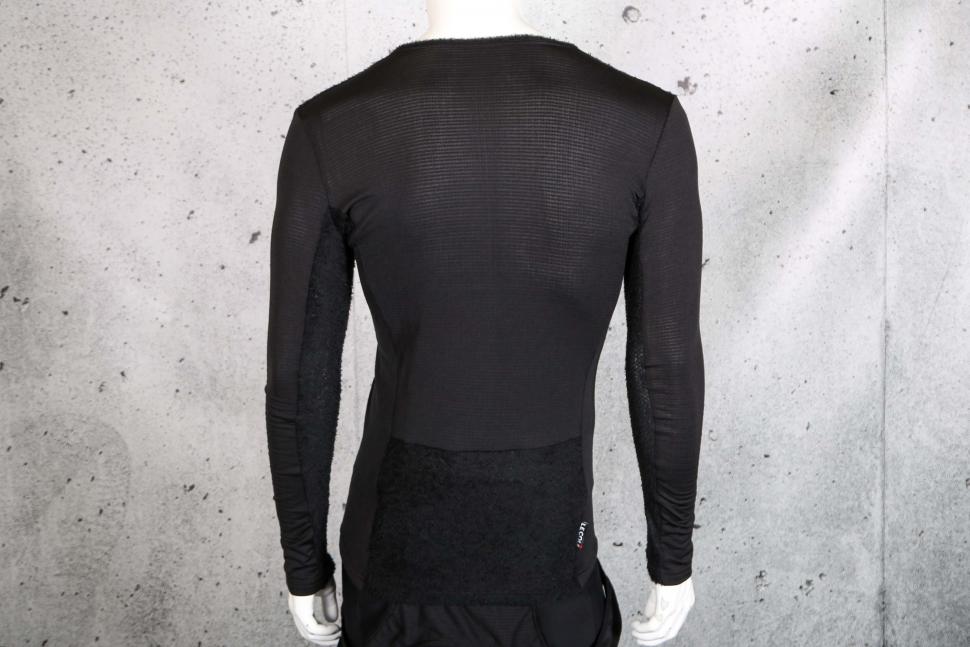
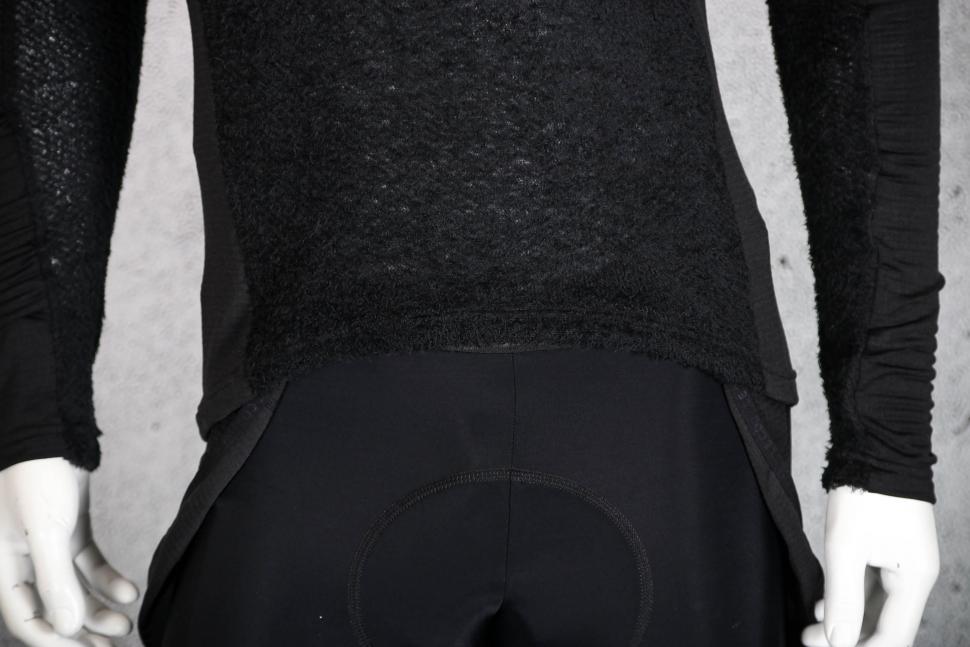

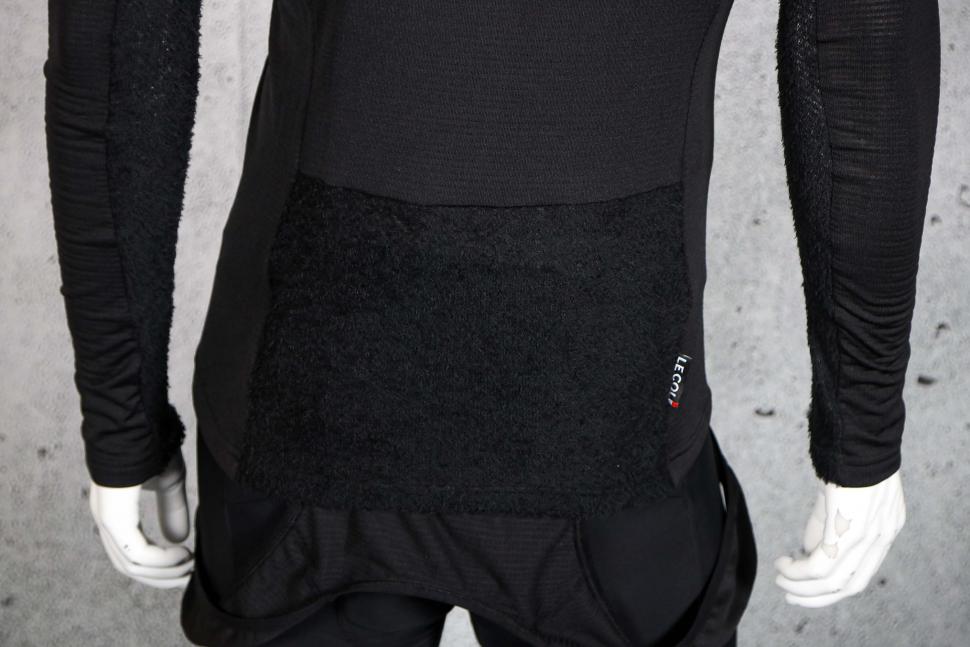
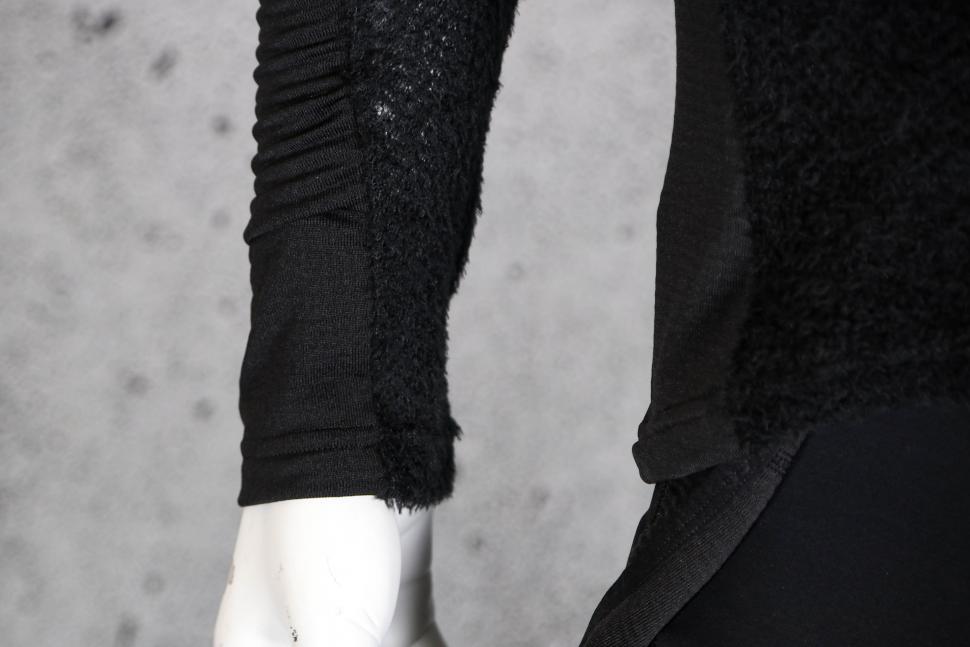
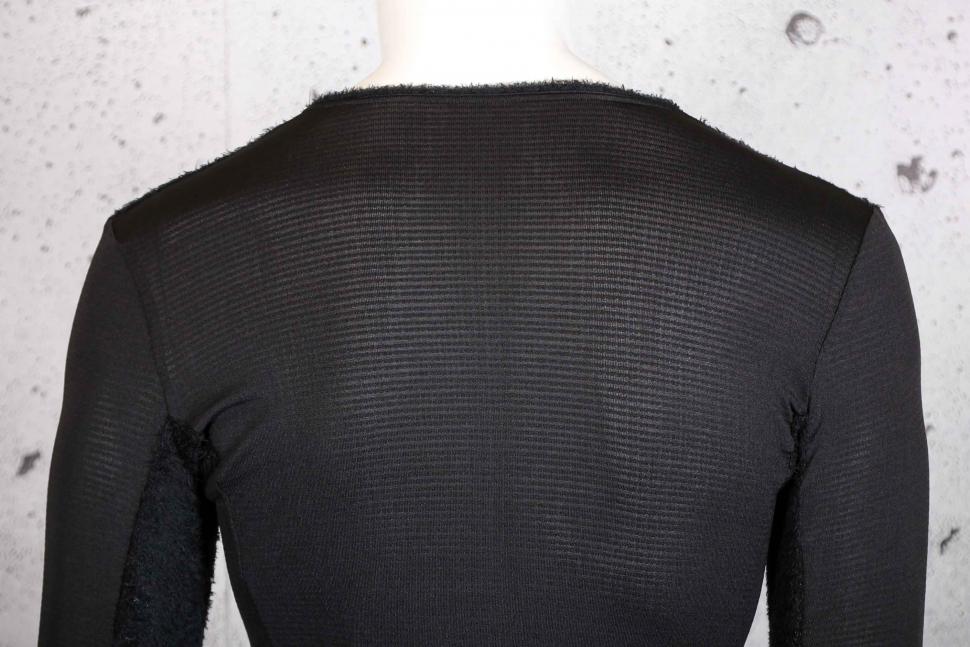
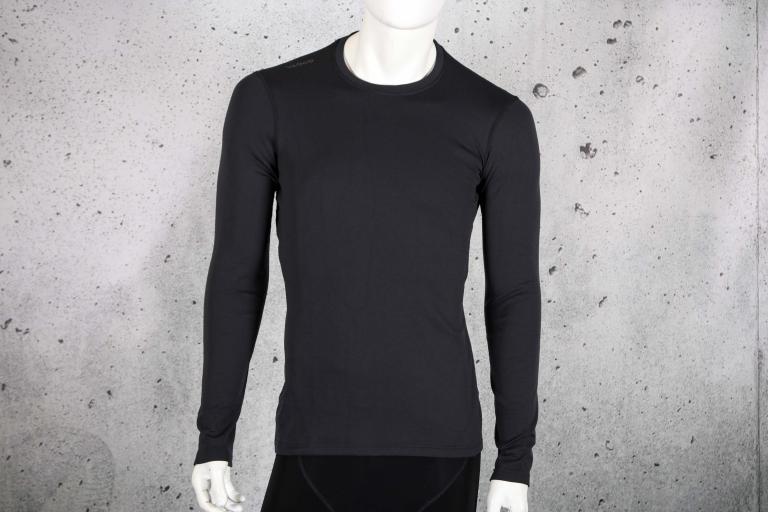
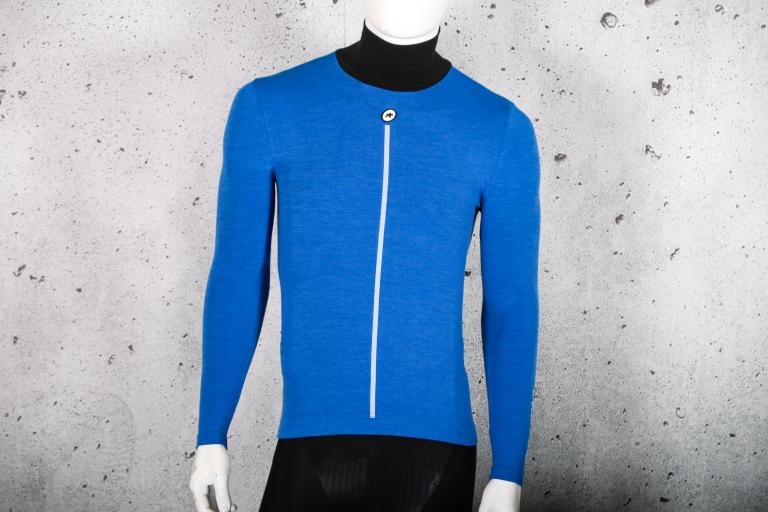

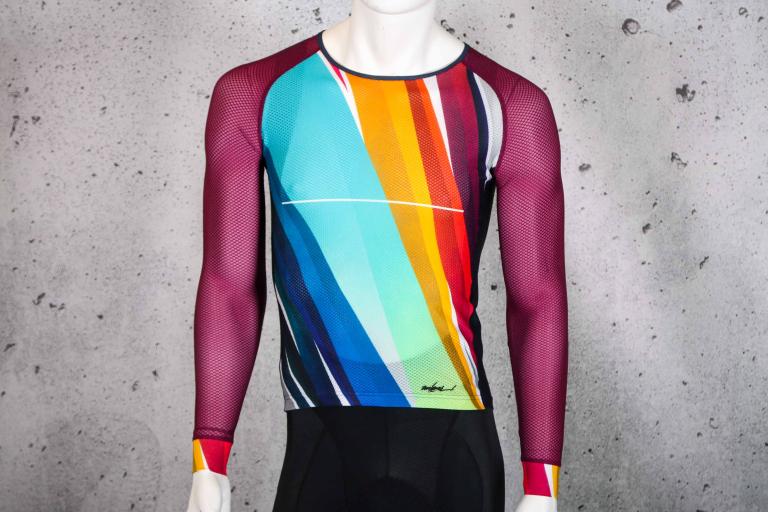
Add new comment
6 comments
Maybe worth a punt for £25, which is the most anyone will pay for it with the constant 'discounts' and 'sales'. Should be a joint effort by cycling media to not actually publish le col's nonsense 'premium' pricing. Their stuff is fine for the price you pay, but at the advertised price is crap, as anyone who's ever owned their bibs with the badly sewn pads will tell you.
The low collar is a bit of an odd design choice. Luckily there are plenty of good alternative options out there. I recently got an Assos Ultraz base layer. Granted it's expensive but it's often on sale (I got it for £60). I find it to be absolutely great. I've used it not only for cycling but also mountaineering and it has excelled every time I've used it.
I'm sure there must be similar tops available for less as well!
"I expected better from a garment made in Italy."
Amazing that this prejudice still permeates. "O them Chinese can make super complex things like my phone, but get them to sew two bits of fabric together! Rubbish"
This LeCol below par garment proves that national discrimination should be a thing of the past, especially in journalism. The quality control of the factory and the brand, NOT its place of manufacturing- should be audited in a review.
I take your point, and I've expressed similar views elsewhere, but I think the more charitable interpretation here is: If the company is going to bother having the garment made in Italy, instead of somewhere it can be produced less expensively, I would expect them to ensure it's worth the manufacturing premium.
I don't mean to put words in the author's mouth, and I certainly can't divine his personal intent, but I don't see anything in this review (nor can I recall anything from his previous reviews) implying that poor manufacturing would be expected from, say, China. It's just that China produces low end and high end and everything in between, so in that case the origin per se doesn't tell you anything at all, whereas things manufactured in Italy tend to be high quality because that's the only way to justify the cost of manufacturing there.
All that said, I do agree that bit in the article could have been written with more nuance. Despite how I read it, and regardless of what the author intended, the way it's currently written is vulnerable to negative interpretation.
[EDIT] Looks like that sentence has been changed to remove any geographical reference. Glad road.cc is paying attention and updating articles as needed, but do wish they would be more transparent and interactive about it.
Hi both, apologies for the confusion here. To clarify the reviewer was in no way insinuating anything about the quality of goods manufactured elsewhere, and simply meant that Italy "has a reputation for fine tailoring". I think ejocs has explained it perfectly and I can't think of anything else to add, we agree the sentence could have had a little more explanation. We decided to remove the geographical reference entirely as we don't want it to be interpreted in any other way.
LeCol's slightly ludicrous pricing (relative to the quality and finish) has to be considered part in parcel with the fact that no one ever pays the headline price. With all the strava challenges they do coming with a £50 discount code or similar, all of their gear is effectively permanently heavily discounted. I guess they price that in by adding at least a quarter/third to all the prices above what they would otherwise charge